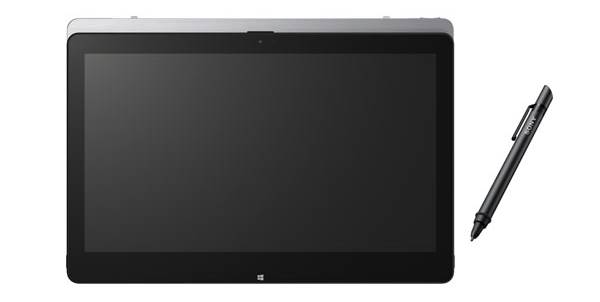A few short
months after revealing their flagship Ultrabooks, the Sony Vaio Duo 13 and the
Sony Vaio Pro 13, Sony’s let loose a new model from their Ultrabook stable. The
13.3-inch Vaio Fit 13A is targeted at those looking for something that combines
the best of what the Duo 13 and Pro 13 has to offer. Interestingly, the Fit 13A
is in no way handicapped in comparison with the aforementioned Duo and Pro
models as it also features top-tier components like a speedy fourth generation
Intel U-series processor and SSD.

Sony's
latest hybrid is taking aim at one of the most competitive segments in the
laptop world — ultraportable Ultrabooks that can convert into tablets.
The question
then becomes “if they’re the same, then what’s the Fit 13A for?” And we asked
Sony. The answer is that the Duo 13 (being a convertible notebook) has certain
limitations, like a smaller keyboard and trackpad, while the Pro 13 (being a
lightweight Ultrabook) doesn’t give users the option of using it as a tablet,
nor does it come with a digitizer.
Hence the
1.31kg, 14.3mm (at its thinnest point) Vaio Fit 13A, that sits right in between
the two in terms of functionality. It has a full-sized keyboard and trackpad
that the Duo doesn’t, and is able to convert into a tablet, a form factor that
the Pro 13 doesn’t have.

One
of our favourite things about the Fit 13 is the wonderful display,
which delivers beautiful, vibrant colours, no surprise given Sony's TV
heritage.
The Fit 13A
converts into a tablet with the help of a unique hinge that sits in the middle
of its display. Simply unlock the hinge, flip the screen backwards, and it will
stay securely in place thanks to strategically placed (and very strong)
magnets. If you leave it as it is, you’ll have the Fit 13A in display mode,
which is great for viewing content without having the keyboard in the way.

Thanks
to a rather complex hinge mechanism, the display can be unlocked and then slid
down over the keyboard, turning it into a tablet without leaving the keyboard
exposed
Close the lid
after flipping the display and you’ll immediately have it in tablet mode. In
this mode, users will be able to interact with the machine’s touch display with
either their finger, or the included digitizer (powered by N-Trig technology)
stylus.
While this
kind of versatility is now common on convertible Ultrabooks, the Fit 13A’s
implementation is simple and elegant. Conversion from notebook to tablet is
smooth, without any elaborate mechanisms to get in the way, or present problems
due to wear and tear. However, take note that the lid has to be fully opened
(90 degrees or more) before you attempt to fl ip the display, because the
keyboard gets in the way.
Unlike most
notebooks— even Sony’s own Duo and Pro models—the Fit 13A comes with two
built-in cameras. The front facing camera is a standard 0.92MP camera used for
video conferencing, while a secondary camera placed that the bottom of the
machine is a fully functional 8MP camera to use in tablet mode.